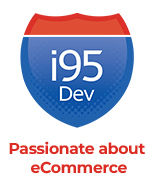With the beginning of each year, we are reminded of what the “new” new is: Forty is the new 30, green is the new black and so on. For 2012, Gartner recommends that retailers embrace the concept of MIOE (Merchandising, Inventory and Operations Execution) as the “new S&OP (Sales and Operations Planning),” with the following definition:
- A cyclical, monthly business planning process
- A flexible, but structured, process that focuses on aligning merchandising strategy with inventory and operational execution activities
- The connection and alignment between company, merchandising and supply chain strategies
- A focus on the midterm (typically, a three- to 24-month planning horizon)
- A framework with a goal to maximize market opportunity, profitability and customer satisfaction
Interested to learn more about optimizing your MIOE processes? Watch our on-demand webinar now.
Although the sales and operations planning (S&OP) process may not resonate with most retailers, aligning merchandising, inventory and operations execution (MIOE) certainly should. Joining these key activities provides the framework that links the vision and strategy of the merchants with the execution arms of the organization, such as supply chain and store operations.
The Retail MIOE process consists of three key components:
- Merchandising — This is the process responsible for key merchandising decisions concerning assortment (what products to carry where), space (appropriate allocation of space for an item) and price (what retail price to assign to an item by location and channel). It also includes setting the strategic direction of categories, the role of new items and overall support of the company’s “brand promise” with its consumers (that is, its retail strategy).
- Inventory — This process is responsible for demand sensing, demand shaping and profitably responding to the demand signal. It includes demand management and supply planning, incorporating inventory management and policy decisions.
- Operations execution — This includes the activities responsible for delivering against the merchandising and inventory decisions. It typically involves trade-off decisions regarding capacity and labor constraints across distribution, transportation and store operations.
Based on research, most retailers land in Stage 1 (Develop Operational Plan) or early Stage 2 (Resource Alignment) MIOE maturity. Many retailers find themselves in these early maturity stages because they lack the fundamental disciplines necessary to enable sound MIOE processes:
- A consistent, end-to-end, coordinated demand and supply plan
- A strong governance model that provides a consistent cycle and rhythm to the MIOE processes across short and midterm planning horizons
- Established metrics to understand the role MIOE plays in enabling business performance
A well-designed and implemented metrics framework is vital for MIOE/S&OP success. Key metrics should include forecast accuracy, on-shelf availability, service level, costs and inventory productivity. Advanced merchandising plans that support today’s changing shopper will be the impetus behind formalizing the MIOE process.
Elevate your retail game. Discover expert tips and strategies to overcome challenges and boost sales.
Recent Blogs
22 benefits ecommerce home decor furniture businesses
22 Benefits of eCommerce for Home Décor and Furniture Businesses Author Category Share Home décor and furniture businesses are increasingly turning to eCommerce to elevate their operations...
Home Improvement Industry: 11 Key eCommerce Features Consider
Elevating Home Improvement eCommerce: 11 Must-Have Features for a Seamless Shopping Experience Author Category Share In the dynamic landscape of home improvement, furniture, and lifestyle,...
Complete Guide to Automotive eCommerce Growth, Trends, Challenges, Solutions
A Comprehensive Guide to Accelerate Your Automotive Business Growth with eCommerce Author Category Share Introduction The automotive industry has undergone a significant transformation in...




